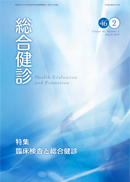Volume 48, Issue 5
Displaying 1-8 of 8 articles from this issue
- |<
- <
- 1
- >
- >|
Original Article
-
Article type: Original Article
2021Volume 48Issue 5 Pages 379-387
Published: September 10, 2021
Released on J-STAGE: November 10, 2021
Advance online publication: June 15, 2021Download PDF (1110K) -
Article type: Original Article
2021Volume 48Issue 5 Pages 388-393
Published: September 10, 2021
Released on J-STAGE: November 10, 2021
Advance online publication: August 18, 2021Download PDF (957K)
Case Report
-
Article type: Case Reports
2021Volume 48Issue 5 Pages 394-399
Published: September 10, 2021
Released on J-STAGE: November 10, 2021
Download PDF (2169K)
Field Report
-
Article type: Field Report
2021Volume 48Issue 5 Pages 400-406
Published: September 10, 2021
Released on J-STAGE: November 10, 2021
Download PDF (1678K)
Lectures
49th JHEP conference 2021
-
Article type: Lecture
2021Volume 48Issue 5 Pages 407-412
Published: September 10, 2021
Released on J-STAGE: November 10, 2021
Download PDF (1065K) -
Article type: Lecture
2021Volume 48Issue 5 Pages 413-420
Published: September 10, 2021
Released on J-STAGE: November 10, 2021
Download PDF (1292K) -
Article type: Lecture
2021Volume 48Issue 5 Pages 421-426
Published: September 10, 2021
Released on J-STAGE: November 10, 2021
Download PDF (1152K) -
Article type: Lecture
2021Volume 48Issue 5 Pages 427-430
Published: September 10, 2021
Released on J-STAGE: November 10, 2021
Download PDF (849K)
- |<
- <
- 1
- >
- >|
